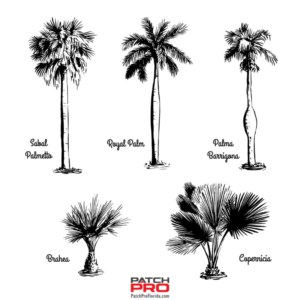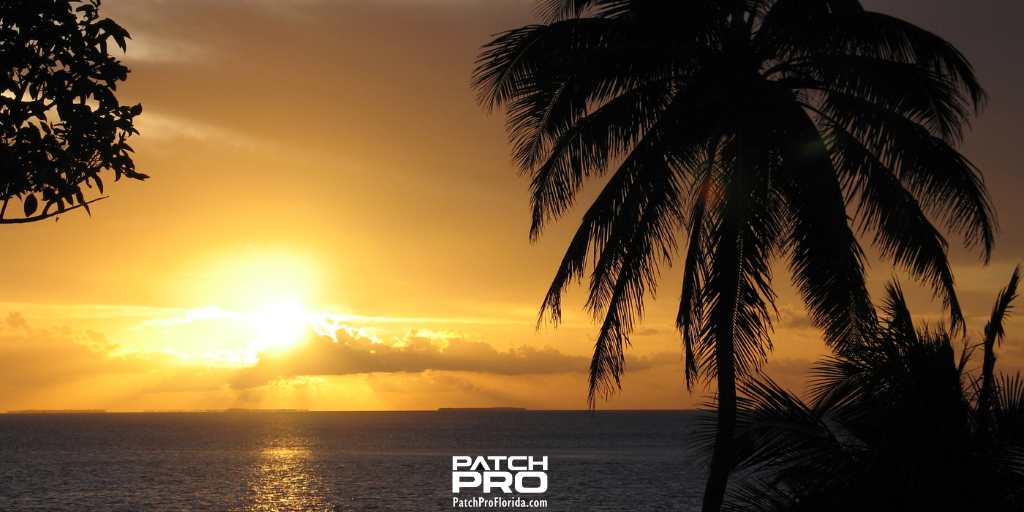When you think of Florida, you might think of sandy beaches, warm weather, and citrus groves. But did you know that Florida is also home to a wide variety of trees? From towering pines to delicate orchids, the state’s trees are as diverse and interesting as its wildlife and landscape. In this blog post, we’ll take a look at the trees that are native to Florida, as well as those that have been introduced from other parts of the world.
Trees Native to Florida
Florida is home to many unique and fascinating trees that are native to the state. Here are just a few examples:
 Live Oak:
Live Oak:
This majestic tree is one of Florida’s most iconic and beloved trees. With its spreading branches and thick canopy, the live oak provides shade and beauty in equal measure. It’s also known for its long lifespan, with some live oaks living for hundreds of years. These trees can grow up to 80 feet tall and can live for hundreds of years. Their leaves are evergreen, and their bark is thick and dark, making them an ideal shade tree. They are also known for their strong root system, which can help prevent soil erosion. They are also a popular choice for planting in urban areas and are known to improve air quality and reduce noise pollution.
Bald Cypress:
This tree is often found in swampy areas and along riverbanks. It’s known for its “knees,” which are small, knobby projections that stick out of the ground around the base of the tree. These knees are actually roots that have grown above ground in order to help the tree absorb oxygen in waterlogged soils. They can grow up to 150 feet tall and can live for more than 600 years. They are known for their distinctive, conical shape and their feathery leaves. They are also known for their ability to reduce the risk of flooding and for their role in creating wetlands habitats.
Sabal Palm:
This tall and stately palm tree is native to Florida, and it’s the official state tree Florida. Sabal palms are known for their fan-shaped leaves and ability to grow in various soils and conditions. They can reach up to 80 feet tall and can live for more than 100 years. They are also known for their hardiness and can withstand strong winds and storms. Their fruit and seeds are also a popular food source for wildlife. They can often be found near Florida’s beaches.
Pine Trees:
Florida is home to many different species of pine trees, including the longleaf pine, loblolly pine, and slash pine. These trees are known for their tall, straight trunks and their needle-like leaves. They are also known for their longevity and can live up to 100 years. They are also a vital source of natural resources, such as timber and turpentine, and are a habitat for many animals like bears, deer, and foxes.
Trees in Florida Not Native to Florida
In addition to its native trees, Florida is also home to many trees that have been introduced from other parts of the world. These non-native trees can be found in gardens, parks, and neighborhoods throughout the state. Here are a few examples:
Royal Palm:
This tall and elegant palm tree is native to South America, but it’s a common sight in Florida. It’s known for its smooth trunk and feathery fronds, reaching up to 20 feet in length. These trees can grow up to 100 feet tall and are known for their elegant, symmetrical shape and their large, feathery fronds. They are also a popular choice for landscaping because of their low maintenance. Their flowers and fruit are also used in traditional medicine and as a source of food.
Camphor Tree:
This tree is native to China and Japan, but it’s a popular choice in Florida because of its fragrant leaves and its ability to grow in a wide range of soils. It’s often used as a street tree or in parks. Its leaves and bark are used for medicinal purposes, and its wood is used for furniture and construction.
Jacaranda:
This tree is native to South America, but it’s a common sight in Florida. It’s known for its purple flowers and its fern-like leaves. They are also a popular choice for landscaping and are known for their striking flowers and lush foliage.
Chinese Flame Tree:
This small tree is native to China and Taiwan, but it’s a popular choice in Florida because of its striking red flowers. They are also known for their low maintenance, and they are popular choice for street trees and in parks.
The Three Most Common Trees in Florida
Florida is home to a wide variety of trees, both native and non-native, but some are more commonly found in the state than others. Here are the three most common trees in Florida, all of which are mentioned above:
# 1: Southern Magnolia:
This tree is native to the southeastern United States, including Florida. It’s known for its large, fragrant flowers and its glossy, evergreen leaves. These trees can grow up to 80 feet tall and are a popular choice for landscaping, street trees, and parks.
# 2: Royal Palm:
As mentioned earlier, this tree is native to South America, but it’s a common sight in Florida. They are known for their elegant shape and large fronds, and they are a popular choice for landscaping and street trees.
# 3: Live Oak:
This majestic tree is one of the most iconic and beloved trees in Florida. With its spreading branches and thick canopy, the live oak provides shade and beauty in equal measure. It’s also known for its long lifespan, with some live oaks living for hundreds of years. They are a popular choice for planting in urban areas, parks, and street trees.
Florida’s trees are beautiful and play a vital role in the state’s environment and culture. From the majestic live oak to the elegant royal palm, Florida’s trees offer beauty, shade, and ecological benefits. Whether you’re a resident or a visitor, it’s worth taking a stroll and admiring the state’s trees, both native and non-native, and appreciate their contributions to the state’s environment and culture.
So next time you’re out and about in Florida, take a moment to appreciate the state’s incredible trees. And if you’re thinking about planting a tree of your own, why not consider a native or non-native species that are well-suited to Florida’s unique climate and environment. Happy tree-spotting!”



You must be logged in to post a comment.